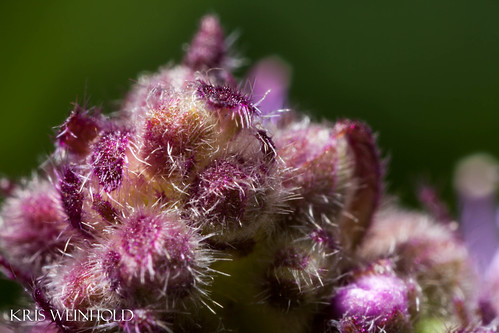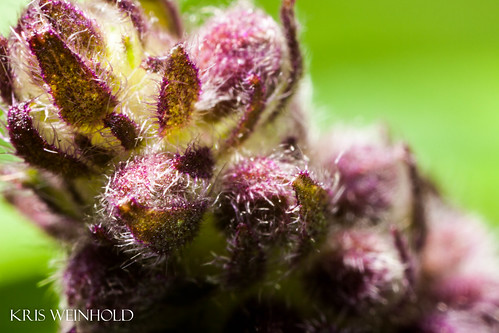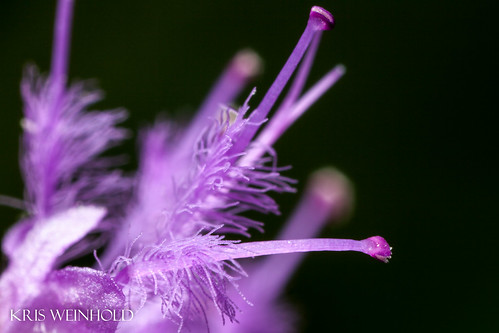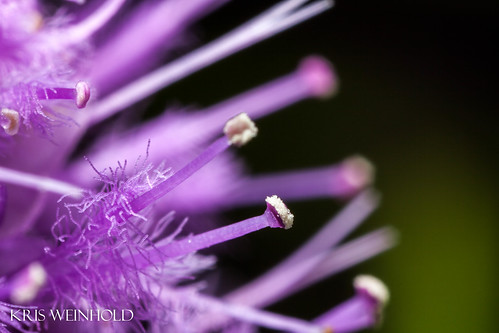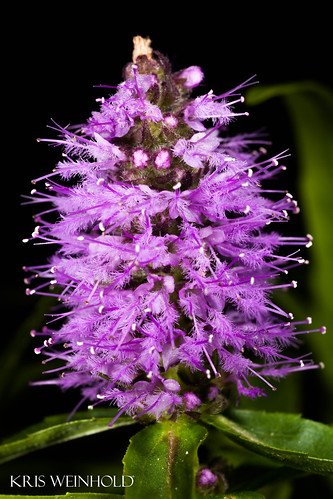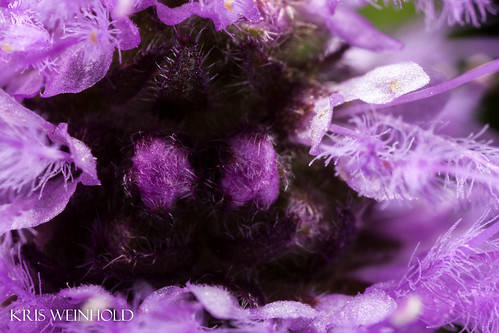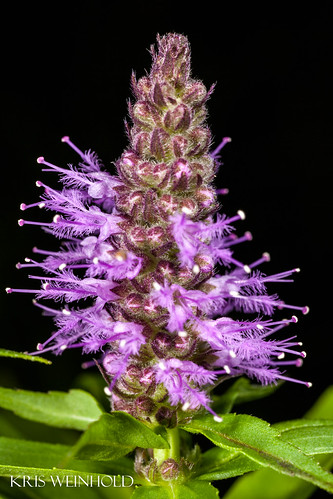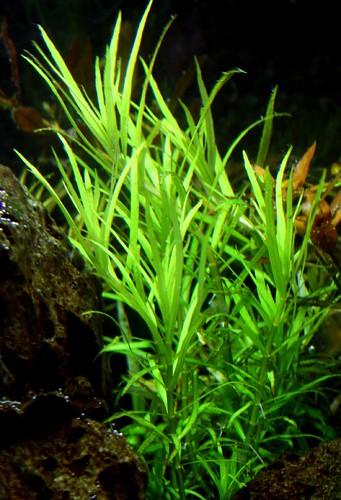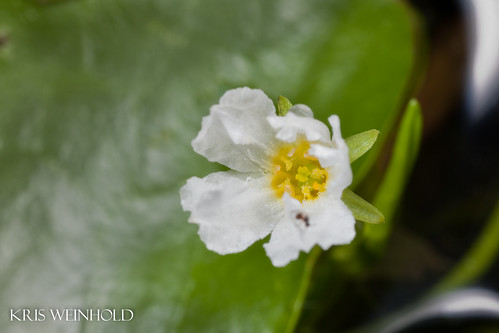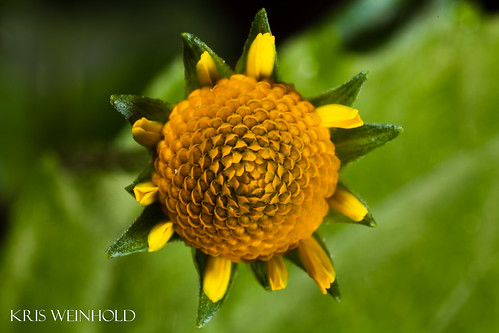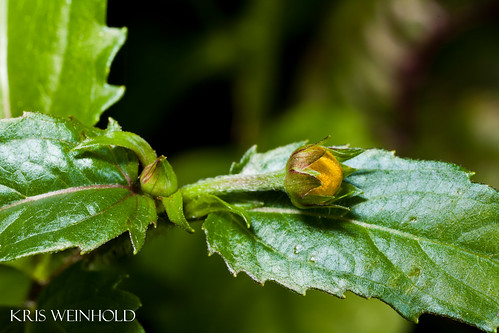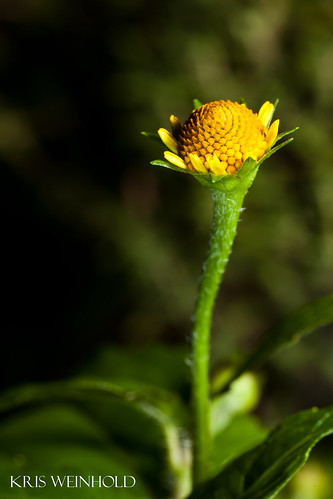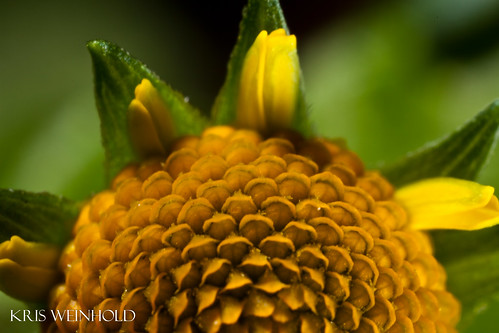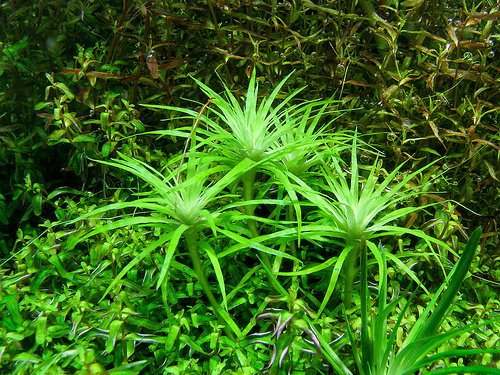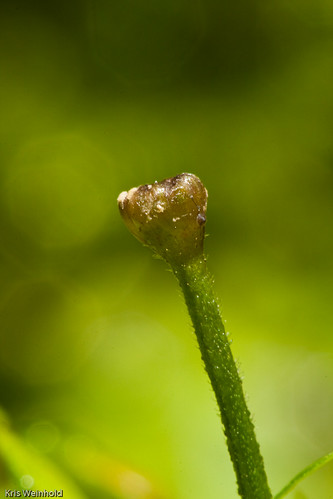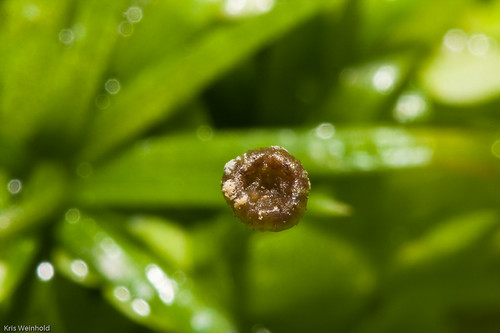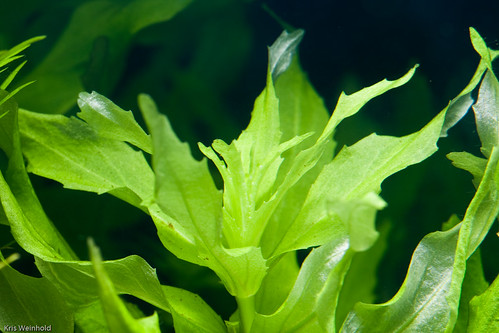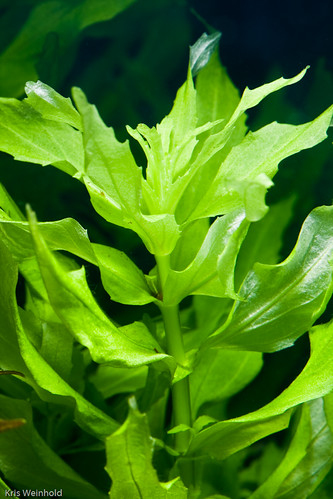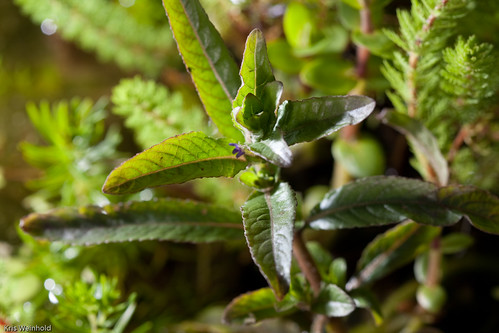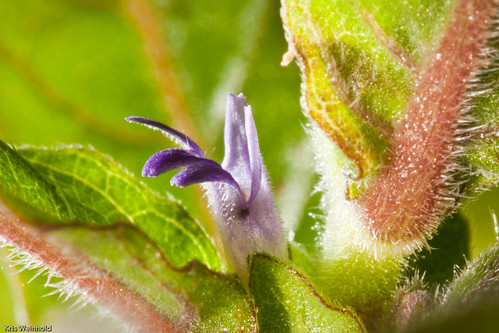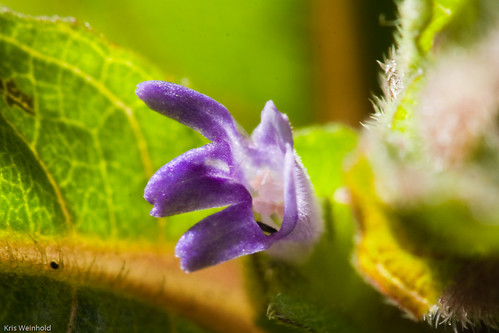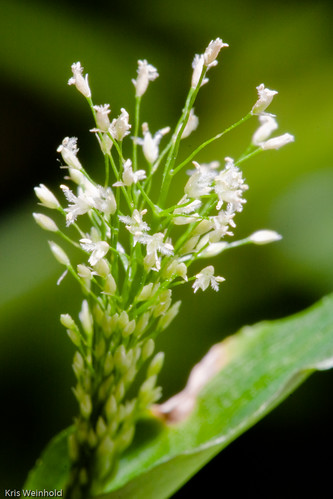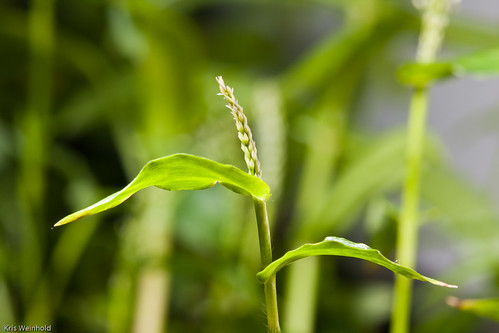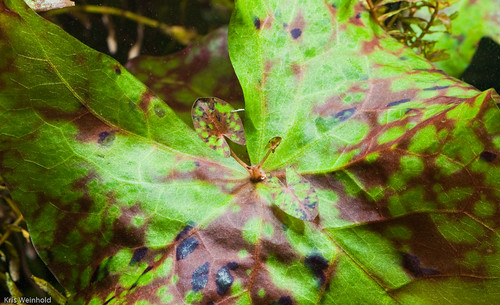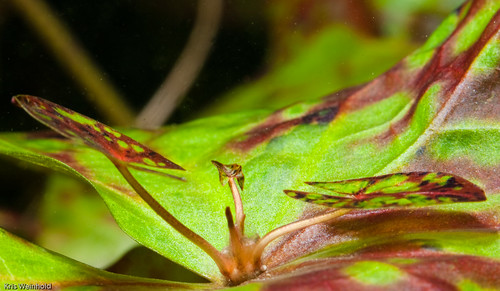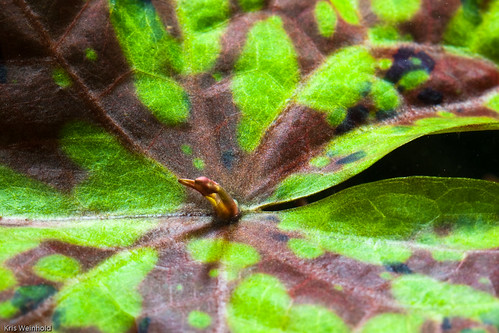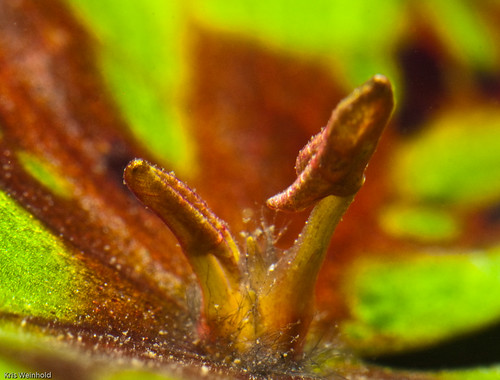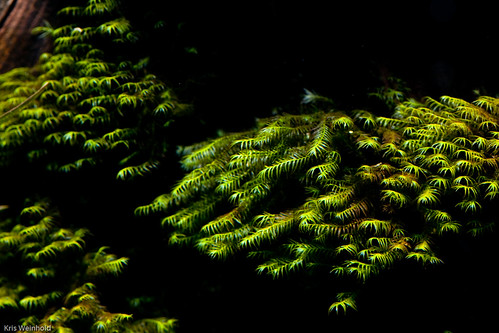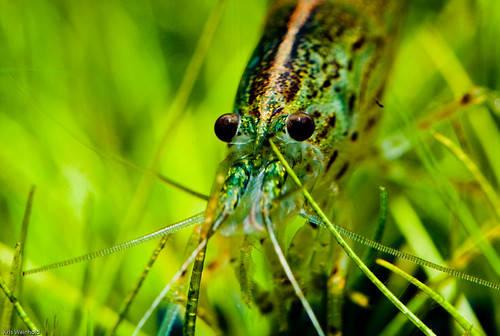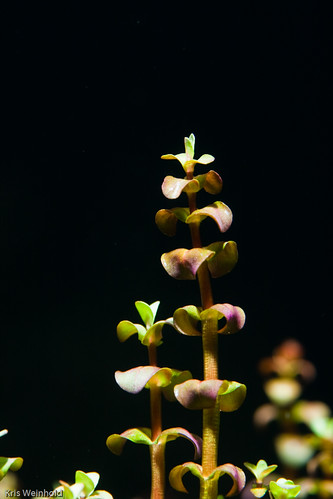Pogostemon yatabeanus Flowers
September 29th, 2012It’s autumn and with the cooler temperatures some of the plants out in my pond are going to flower. The most striking one is a field of Pogostemon yatabeanus that I have out there.
This Asian native has grown wonderfully all summer for me
, but has started producing terminal flower spikes on most of the stems.
The spikes themselves are quite pubescent (hairy), and are made up of hundreds of individual flower buds.
Up close, the flower buds look more like an insect than a flower, but you can see that they gradually begin to open up, with each bud producing a viable flower.
The flowers themselves are a brilliant purple and very feathery. Each flower has a single stamen protruding outward.
The immature flower doesn’t appear to have pollen (below)
, but over a day or two each stamen is filled with it.
In this 5X magnification (below), you can see the tiny pollen particles clustered on the stamen. I’m not sure if a single flower spike can fertilize itself, or whether multiple plants are required.
Eventually, the individual flowers detach from the spike, with the wind carrying them away.
Below is a close-up of what’s left once a flower detaches.
Eventually, all that’s left is a bare terminal spike that looks similar to how it all started.
I really love seeing how our aquarium plants grow and flower outside of the aquarium. Submersed, Pogostemon yatabeanus has growth that’s similar to its terrestrial form, but it’s more delicate with narrower leaves.
By trimming more frequently, you can encourage the plant to produce smaller leaves, which is really necessary for most aquascapes. It also has a unique feature of sometimes sending out creeping runners that then popup new stems a few inches away. Overall, it’s a great aquarium plant, and it converts pretty easily from emersed form.


